Vienna Lager - Nova Lager 10°C vs 19°C Fermentation temperature

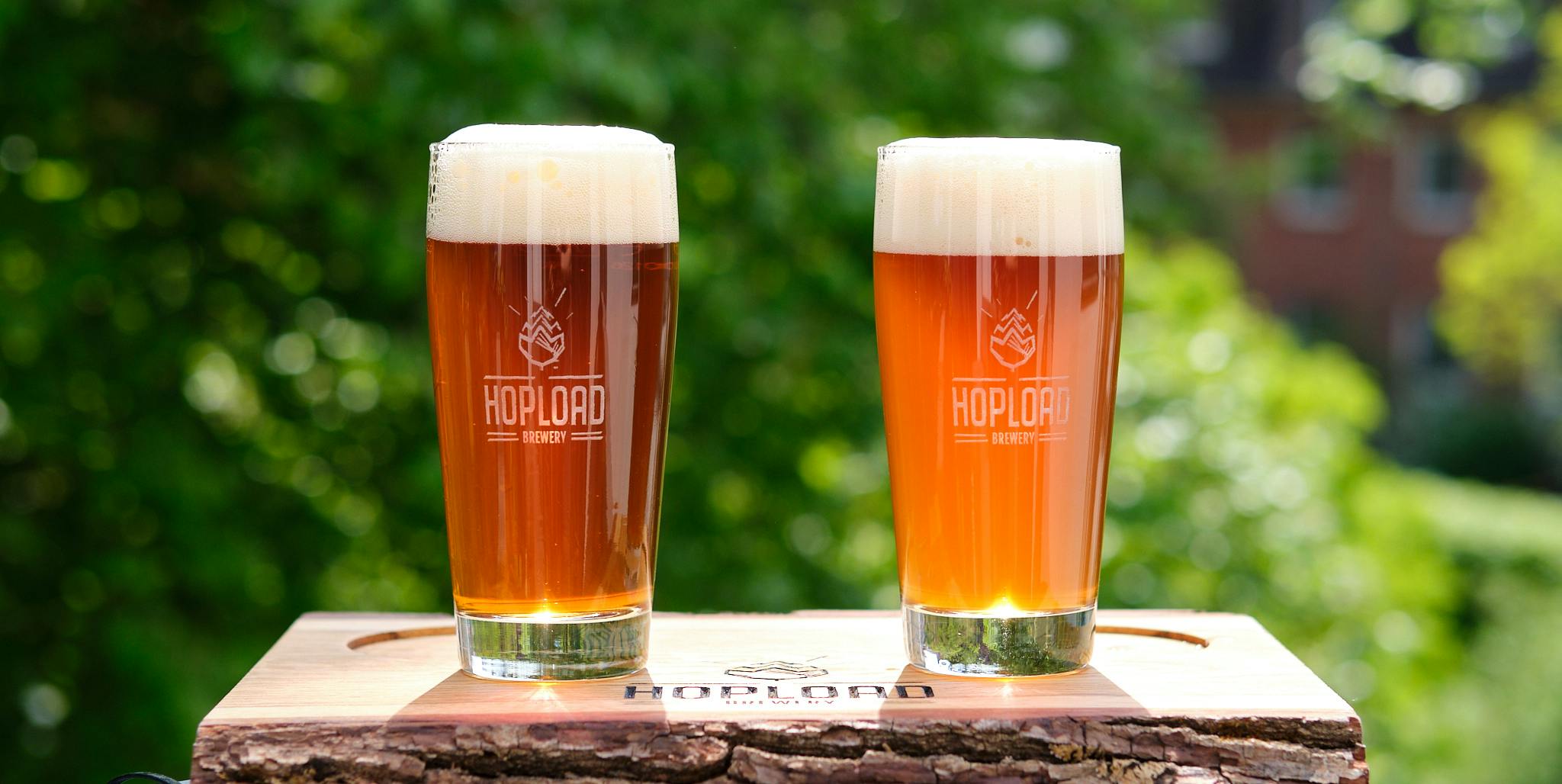

There is hardly a topic that is discussed more among lager brewers than the fermentation temperature. Most recently at the HBCon, I heard many different opinions from experts. For some, fermentation can't be cold enough, while others say that good results can be achieved even when fermenting warm. Especially the representatives of yeast manufacturers were very unanimous that a lager fermented at higher temperatures tastes (almost) exactly the same as one fermented cold.
If you can brew lagers just as good at higher temperatures, and thus require less yeast and fermentation time, I'm certainly interested. Lallemand has released Nova Lager this year for homebrewers. The yeast comes from a completely new lineage (Group III), and not from one of the two lines that have existed for a few hundred years, Frohberg or Saaz.
This yeast in particular is advertised as being capable of producing clean lagers at fermentation temperatures as high as 20°C. The following experiment attempts to verify this claim.
I splicht a brew of Vienna Lager into two fermenters and fermented one at 10°C (starting temperature) and the other at 19°C with Nova Lager.
Recipe
36 Liters - 74% Brewhouse efficiency
7.5kg (92%) - Weyermann Vienna malt
450g (5.5%) - Weyermann Melanoidin
200g (2.5%) - Weyermann Caraaroma
63°C - 20 Minutes
Decoction: 25 Minutes, ca. 10l thick mash
72°C - 30 Minutes
Mash PH: 5.40
13.1°P OG ~21 EBC
Boil Time 90 Minutes
35g Saaz (4.2% AA) - 70 min - 10.1 IBU
13g Herkules (16.4% AA) - 70 min - 14.6 IBU
25g Saaz (4.2% AA) - 10 min - 2.9 IBU
50g Saaz (4.2% AA) - 0 min - 1.2 IBU
29 IBU
Water profile:
98ppm Calcium, 2ppm Magnesium,
9ppm Sodium, 92ppm Chloride,
96ppm Sulfate, 52ppm Bicarbonate
Brewday
For this brew, I heated water from my mixed bed ion exchanger in my kettle and ran it into my SS Brewtech Mash Tun. 20 minutes after mashing, I pulled about 10L of thick mash, rested it at 72°C for 10 minutes, then boiled it for 25 minutes, and then added it back to the mash to bring the entire mash to 72°C, where it was allowed to rest for another 30 minutes.
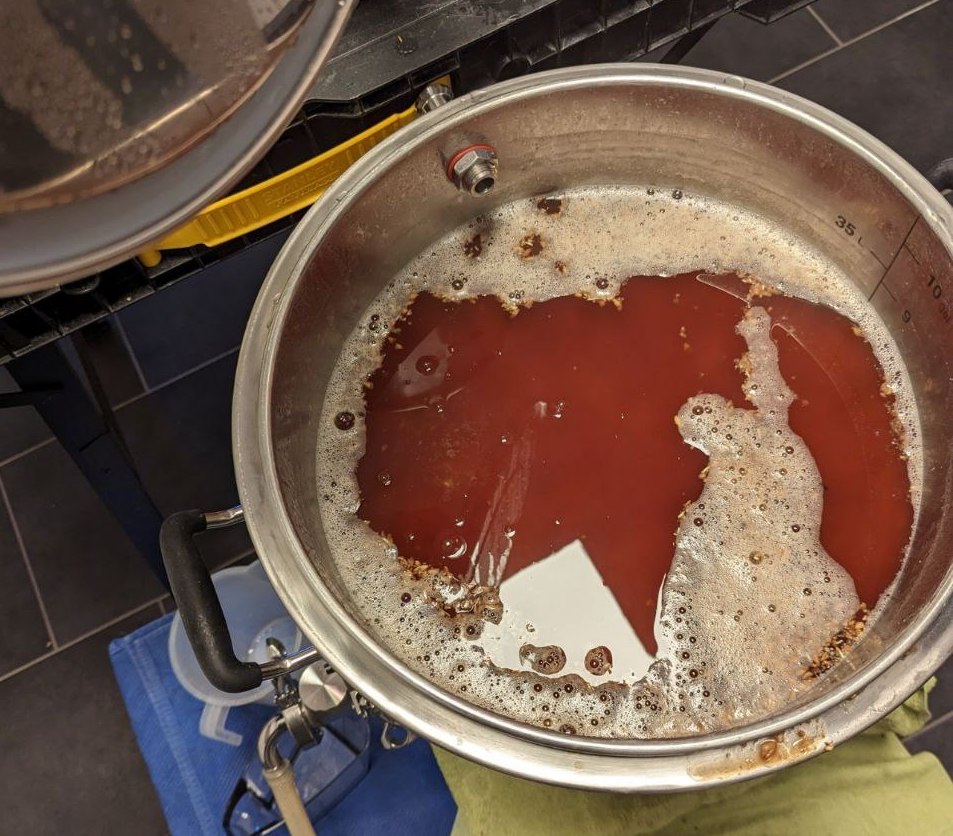
After that the wort was lautered back into the kettle.
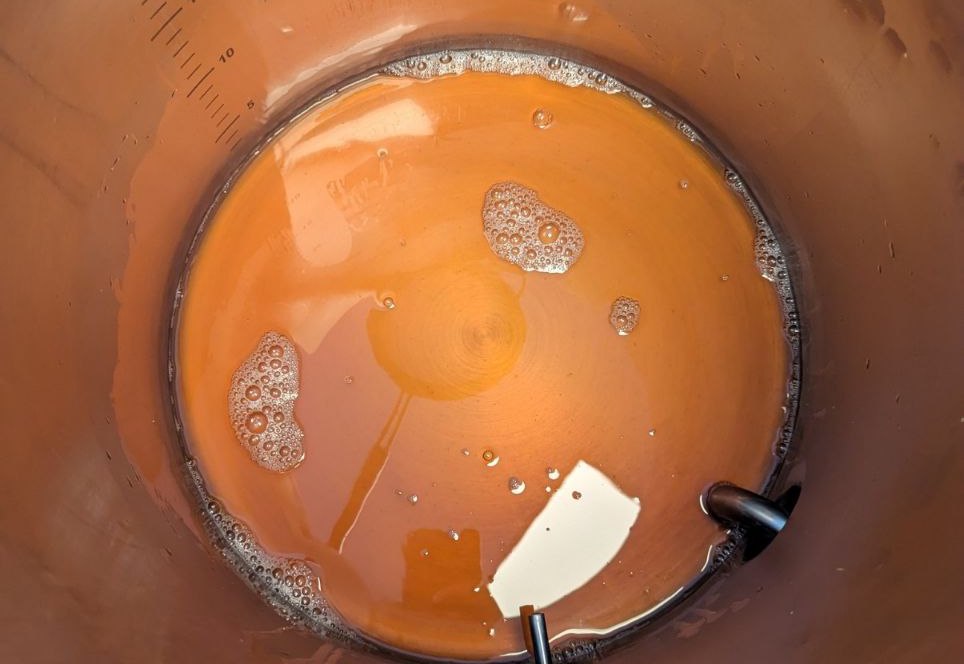
The amount of wort used the absolute limit of my brew kettle. I had to boil very carefully at the beginning to avoid a boilover. The wort was boiled for a total of 90 minutes and the hops were added as specified in the recipe.
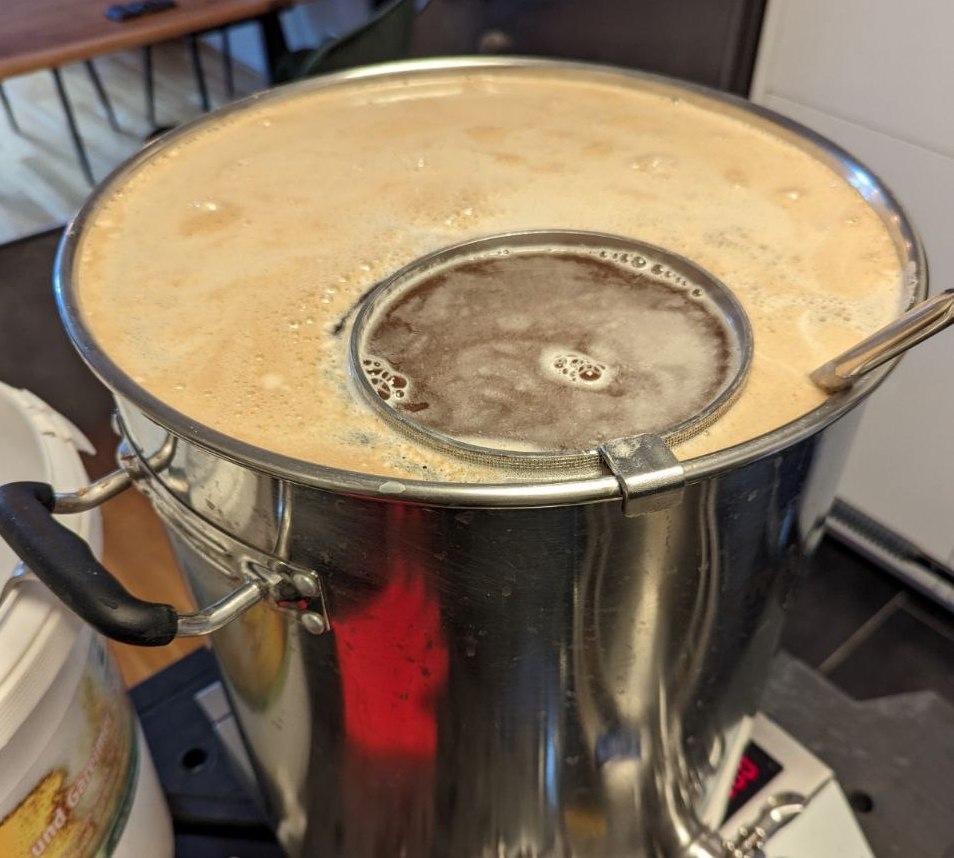
I gradually added water during boiling and cooling to get enough wort for both fermenters. The wort was cooled to 17°C by the immersion cooler.

The original gravity was measured with the Easydens:
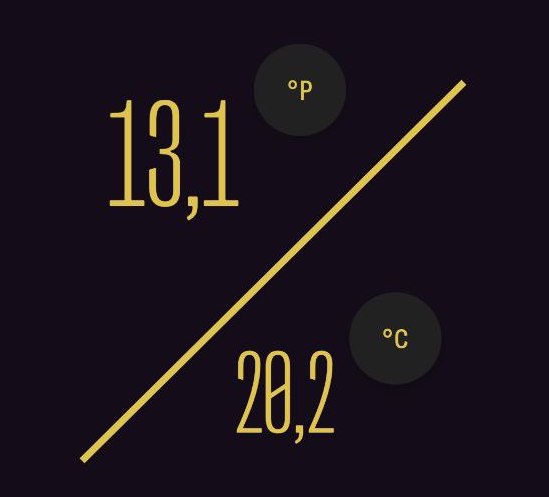
The wort was then divided equally between the two fermenters (18l each). One fermenter was further cooled to 10°C. Then, according to the Lallemand Pitching Rate Calculator, the exact amount of yeast was measured and pitched. For the 10°C fermenter this was 14.9g and for the 19°C fermenter 11.1g i.e. exactly one packet.

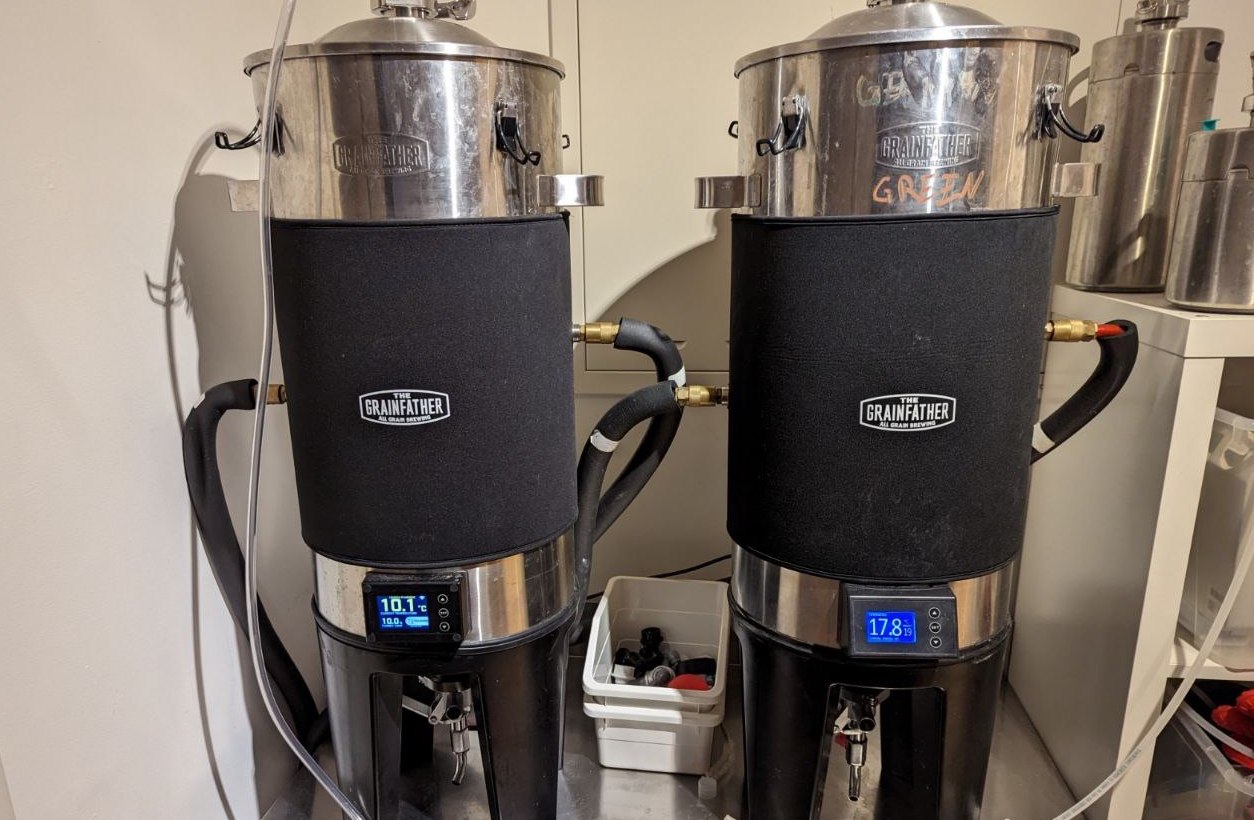
Fermentation
The fermentation was tracked by two Tilts:
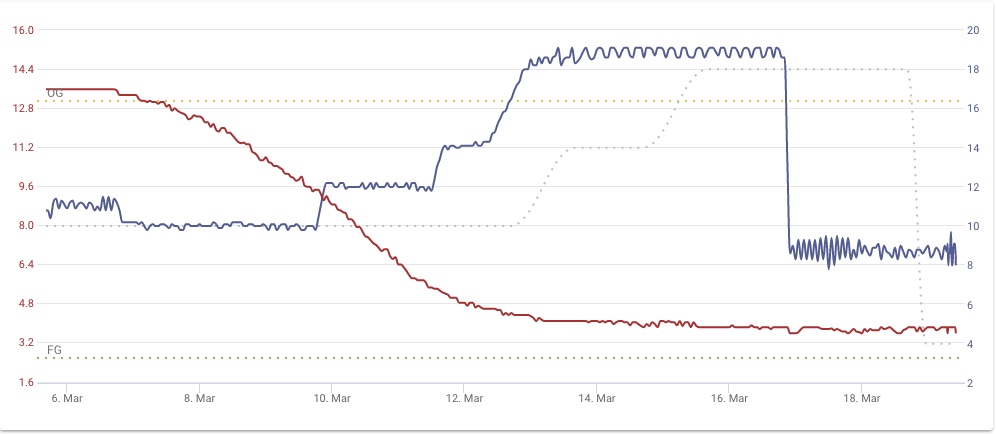 Fermentation at 10°C took about 30h until fermentation kicked off. 4 days after the start of fermentation, after about 50% of the fermentation was completed, I started to increase the temperature a little bit at a time until the temperature was at 18°C and kept it there for a few days. After about 2 days of cold crash, the beer was transfered into the keg.
Fermentation at 10°C took about 30h until fermentation kicked off. 4 days after the start of fermentation, after about 50% of the fermentation was completed, I started to increase the temperature a little bit at a time until the temperature was at 18°C and kept it there for a few days. After about 2 days of cold crash, the beer was transfered into the keg.
The final gravity is 2.9°P (measured with the Easydens) with an attenuation of 78.5% and an alcohol content of 5.5% ABV.
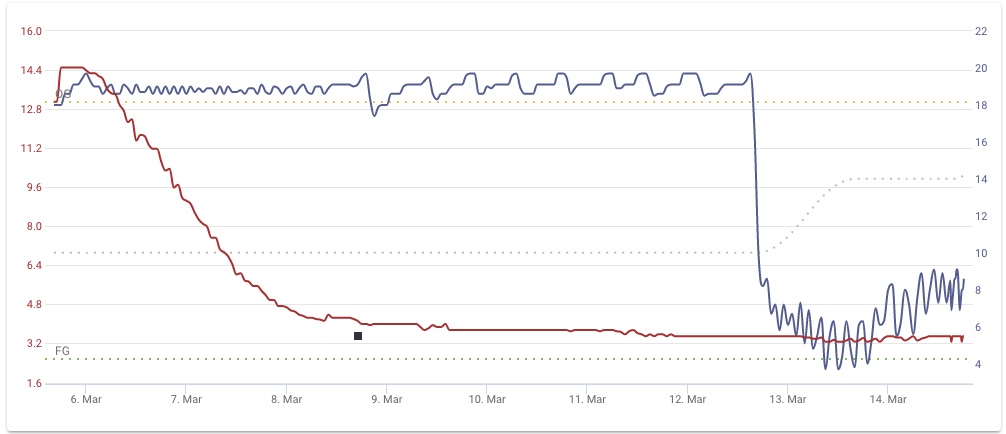 Fermentation at 19°C took only a few hours until fermentation kicked off. The fermentation was almost finished after 2-3 days. After the activity had subsided, I let the beer rest for another 2-3 days at 19°C and after 2 days of cold crash the beer was transfered into a keg.
Fermentation at 19°C took only a few hours until fermentation kicked off. The fermentation was almost finished after 2-3 days. After the activity had subsided, I let the beer rest for another 2-3 days at 19°C and after 2 days of cold crash the beer was transfered into a keg.
The final gravity is 3.2°P (measured with the Easydens) with n attenuation of 75% and an alcohol content of 5.3% ABV.
Blind triangle test
I served the two beers to 25 participants in a blind triangle test. That is, each participant received three cups, in two of which was one of the beers and the third cup had the other beer. For example, yellow: 19°C, gray: 10°C, green: 19°C. The goal is to detect the beer that is different from the other two, in the case of the example, gray. To reach statistical significance with 25 participants (with a p-value of 0.05), 13 participants would have had to correctly identify the beer, but only 11 correctly did so.

My personal opinion
After a few days of storage, the two beers were very different, the 10°C beer seemed cleaner, maltier and somewhat more alcoholic, the 19°C beer fruitier and more estery. After 2-3 weeks, the differences were still very obvious, with the 10°C beer tasting rounder and cleaner, while the 19°C beer tasted fruitier, estery and slightly more bitter.
After the beer had been stored for 7-8 weeks, the 19°C beer was still a bit hazy, while the 10°C version was clear. I was poured a few triangle tests at home and could not detect it every time in the tests. However, in each case I correctly matched the first two beers I drank. It also seemed to me that the taste of the beer changes when only a small amount of 0.1l is poured from tap. I'm unsure what the exact reason is, but I suspect stronger oxidation due to initial foaming.
 Left: 10°C clear - Right: 19°C hazy
Left: 10°C clear - Right: 19°C hazy
Interestingly the 19°C beer didn't clear up and stayed hazy even after 8 weeks of lagering.
If you drink the two beers side by side (from a large glass) the two beers are of course more similar than they are different. However, the 19°C beer had off-flavors that were uncharacteristic for lagers, going in the fruity, estery direction. The 10°C beer was cleaner, maltier and rounder and therefore I find this variant to be more suited to a Vienna lager. For friends who prefer IPAs over lagers, however, the 19°C variant was better received. Compared to the Vienna Lager I brewed at the end of 2022 with the Andechs yeast (L26 Pilgrimage), the beer fermented at 10°C with the Nova Lager is a bit rougher and edgier. So the yeast will not be my favorite for more malt-driven styles. Basically, though, I'm happy with the beer. After 8 weeks of aging, the maltiness comes through relatively well in the 10°C version. But the 19°C version isn't much worse, if the other keg is kicked, I'll get used to it.
Doing and organizing a blind triangle test myself was very enlightening, I will share my thoughts on this in another article.
 Vienna Lager fermented at 10°C, my personal favorite
Vienna Lager fermented at 10°C, my personal favorite